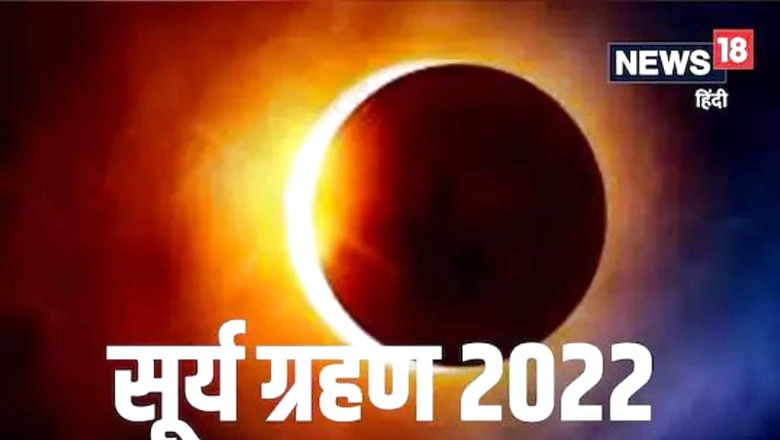
views
SOLAR ECLIPSE 2022: The first solar eclipse or Surya Grahan of 2022 is set to take place on April 30, Saturday. It will not be visible in our country, but people in South and West-South America, the Pacific Ocean, the Atlantic Ocean, and the Antarctic Ocean can see it. It will be the first of the two partial solar eclipses in 2022. The second one will take place on October 25, 2022.
What exactly is a solar eclipse?
For those who are unfamiliar with the celestial/astrological occurrence, a solar eclipse occurs when the Moon passes between the Sun and the Earth at precisely the appropriate time. As a result, the moon obscures the Sun, preventing its rays from reaching the Earth. This entire phenomenon is known as a solar eclipse.
Solar eclipses are classified into four types: total, annular, partial, and hybrid. Furthermore, four eclipses will occur in 2022, two partial solar eclipses and two total lunar eclipses, the same ratio as last year.
A solar eclipse is a breathtaking sight and a once-in-a-lifetime astronomical phenomenon. Each one is only viewable from a specific location.
Timings
The Surya Grahan will commence at 12:15 p.m. and finish at 4:07 p.m., according to Indian Standard Time (IST). It will not, however, be observed in India.
According to EarthSky.org, the eclipse will hit its peak phase around 4:41 p.m. EDT (2041 GMT), when the axis of the moon’s shadow cone comes closest to Earth’s centre.
The eclipse will last three hours and fifty-two minutes. Because it is a partial solar eclipse, the Sutak period will not be observed in India, and the Sutak period customs will not apply.
While many individuals enjoy viewing the process with their own eyes, it is recommended that they wear protective spectacles, binoculars, a box projector, or a telescope.
The eclipse on April 30 happens only four days before the moon reaches apogee, its furthest point from Earth.
Read all the Latest Lifestyle News here


















Comments
0 comment